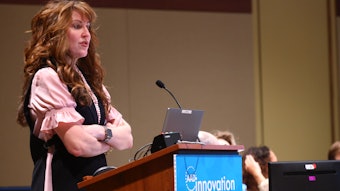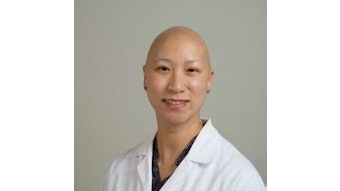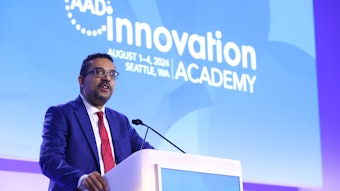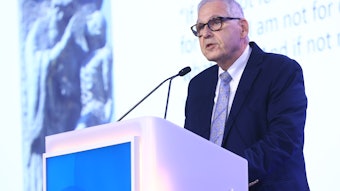A tale of teletechnology
Could hybrid operations be the norm?
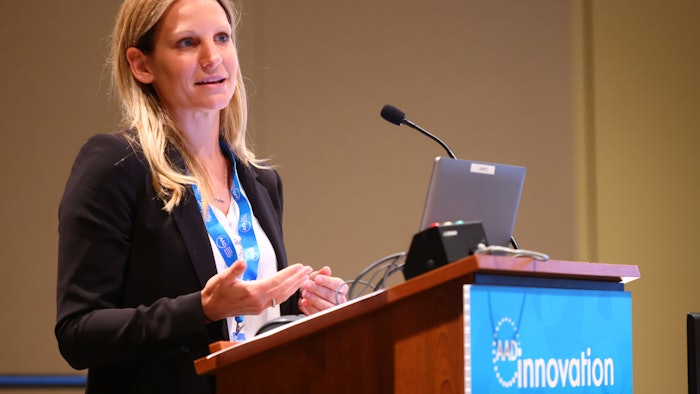
P003 – Teletechnology: What Will It Look Like in 10 Years?
If there’s one thing dermatology learned from the pandemic, it’s that not all patient visits need to be in person. Teledermatology has demonstrated that a range of visits and certain types of patient care and communication can be accomplished remotely.
A recent AAD member survey showed that 67% of dermatologists expect to practice teledermatology at least once a week.
“The pandemic unleashed the true potential for current technology to be used as an integral means for delivering dermatologic care,” said Philadelphia dermatologist Elizabeth Jones, MD, FAAD. “Patients demonstrate an ever-growing demand for newer technologies to improve convenience and cost-effectiveness of care. Dermatologists can work together to focus and share successful, sustainable, safe, and effective means of employing teledermatology in all practice settings.”
Speaking at the Aug. 2 session P003 – Teletechnology: What Will It Look Like in 10 Years? Dr. Jones said there are a number of applications — including artificial intelligence (AI) — that could benefit dermatology in the coming years.
A dual purpose
Ivy Lee, MD, FAAD, a Pasadena, California, dermatologist and chair of the AAD’s Augmented Intelligence Committee, said AI and teledermatology can be combined for a mutually beneficial interaction for both patients and physicians alike.
“AI has the potential to augment teledermatology throughout the patient journey — from image and information intake, to triage, then clinical decision support such as diagnosis and personalized treatment recommendations, followed by care coordination and patient education,” she said. “Teledermatology has the potential to improve AI tools by providing real-world data, which is the fuel of AI, and amplifying the impact of AI solutions.”
Dr. Lee said AI can help collect high-quality data inputs (such as clinical history and images), triage urgent versus routine consults, assist with and generate differential diagnoses, recommend diagnostic workup and treatments, create patient education and care coordination resources, tailor clinician education, and facilitate research in teledermatology. And now that the initial hype is beginning to settle, Dr. Lee said the true potential for AI should begin to emerge.
“For AI development and implementation, I think we are progressing naturally along the Gartner hype cycle, moving out of the Trough of Disillusionment and evolving along the Slope of Enlightenment,” she said. “It is an exciting time. We are no longer asking can we use AI in health and health care. We are now asking why and how we should use AI so that our efforts are patient-centered, evidence-based, effective, ethical, and clinically meaningful.”
Seeing AI as a virtual annex
Many dermatologists are looking at teledermatology as an augmentation to their existing brick-and-mortar practice. Trilokraj Tejasvi, MD, MBBS, clinical professor and director of the cutaneous lymphoma program and teledermatology services in the department of dermatology at the University of Michigan Hospital in Ann Arbor, said this hybrid model can benefit patients and dermatologists alike.
“It allows dermatologists to accommodate specific, meaningful family engagements in the schedule where an in-person clinic would be limited,” he said. “Also, it provides return visit patients and new patients with access to dermatologists, virtually or in person, based on their needs.”
Dr. Tejasvi said that the pandemic showed that — with an easing of bureaucratic restrictions such as licensing across state lines, reasonable reimbursement, and accessible technology — teledermatology can be easily scaled to care for most dermatology patients.
“It also taught us that not all patients are suitable for virtual care,” he added. “But some situations may be appropriate for virtual care, such as acne, patients on isotretinoin, follow-up consultations for eczema and psoriasis, and more.”
Lessons learned
As we advance, Dr. Tejasvi said the lessons learned during the pandemic could help dermatologists and lead to a higher standard of care for their patients.
“A diagnosis-based approach would allow patients access to care and prevent unnecessary in-person visits along with the associated pain points like travel, loss of wages, and parking nightmares,” he said. “This control over meaningful dermatology practice could prevent physician burnout and increase staff retention without severely compromising the revenue.”


